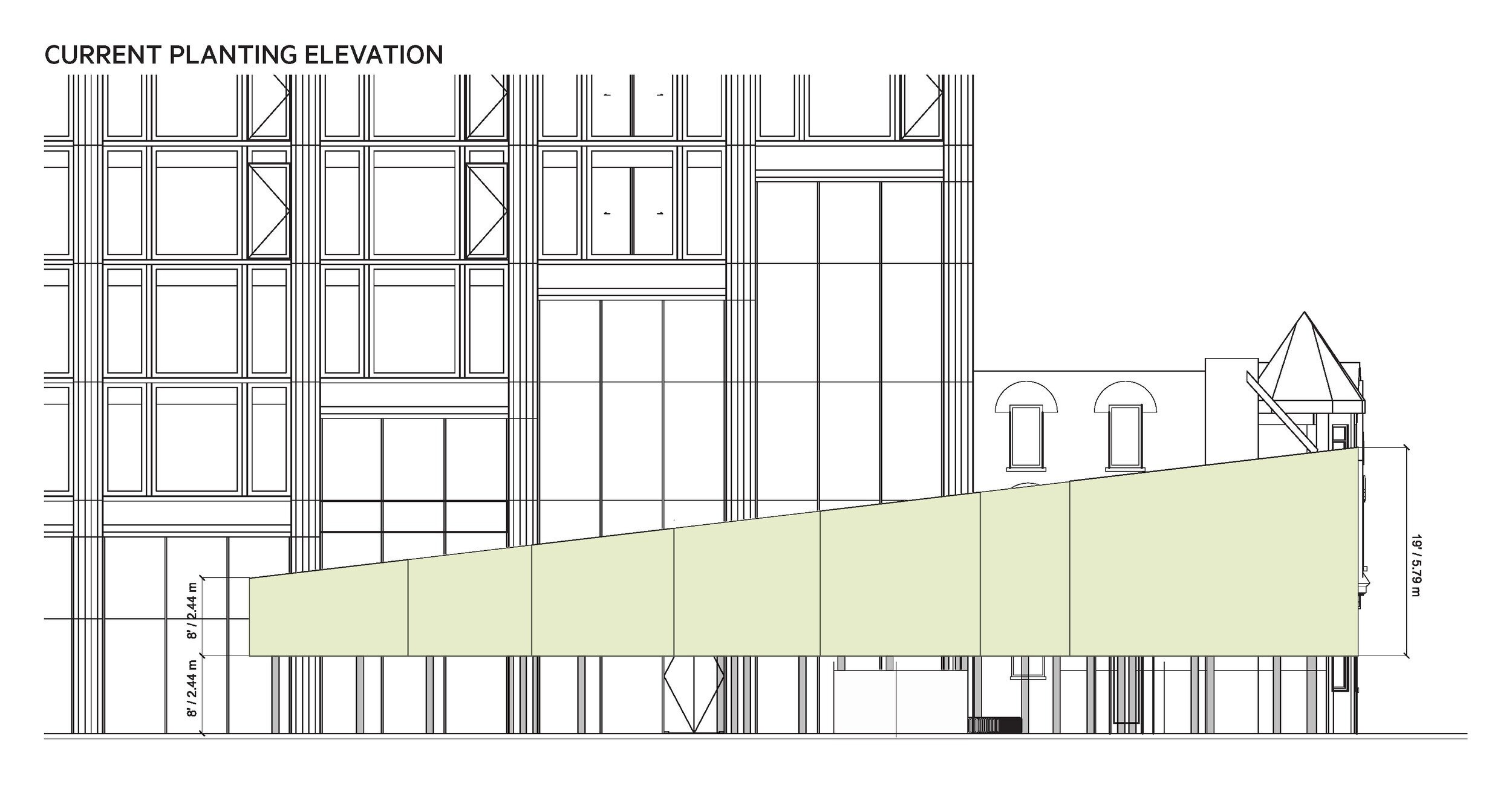Sometimes, we look to the past to give a modern space a distinct personality. In the case of 50 Scollard, a residential tower in the Yorkville neighborhood of Toronto, our team turned back time and ambitiously resurrected the art of pleaching. Pleaching was a common technique in late medieval to early 18th century gardens whereby trees were interwoven to create dense, hedge-like shapes. Branches were trained over time to weave together and in some cases naturally grafted to become living fences. This process would take years as young branches were trained while they were pliable and nurtured into place as they grew and strengthened. Commonly a frame was constructed with stakes, dead branches, or cords to aid in achieving the desired form. The results are stunning—architectural, sculptural, and formal shapes that serve to frame walkways, gardens and lawns.
Examples of pleached trees. Image sources L to R: Steve Whysall, Pinterest, The Telegraph, Wikipedia
In 2017, our team began working on the public plaza and roof terraces at 50 Scollard in conjunction with Foster + Partners. At the ground level, the compact corner plaza space demanded a focal element that could hold its own against the distinct 43-story tower while respecting the historic buildings remaining on site. The solution needed to have an impact but also allow for circulation and a range of programming options such as public events, movie screenings and performances. This is where Stoss designers looked to the past for something new and different. The team presented a bold idea; an undulating canopy of pleached trees that not only oscillates between the building facade and the public sidewalk but also ascends in height. Designed to accentuate seasonal color change, the pleached hedge will be a riot of color in the fall as the trees transition from the green of summer to the bright red of fall.
Translating this big idea into a realistic opportunity has been a challenge and an investment in time and effort. Working with Lanterra Developments, Braun Nursery and PAO Horticultural, Stoss Associate, Marin Braco, has overseen the selection and cultivation process that will ultimately take over 3 years.
Several tree species were considered during the design development phase beginning with trees that were used for pleaching historically, including Lindens, Tilia cordata and European Hornbeams, Carpinus betulus. The team found that many of these species were not appropriate for the conditions of this site—the right tree would need to be able to withstand pressures of a harsh urban plaza, tolerant of drought, salt, wind and disease resistant. With this in mind, the design team narrowed down the selection to 3 varieties of red maples: Armstrong, Red Sunset, and Autumn Blaze. After meeting with the horticulturists and examining both young and mature specimens, it was determined that Autumn Blaze was the best fit for site conditions and design parameters. Characteristics that were considered included:
Growth Rate: While a faster growth rate requires more maintenance, it allows for the final form to be recognizable at the time of installation, and fully realized within 5 years after installation.
Mature Size: A larger mature tree size allows for more flexibility in the training and trimming process.
Branching Structure: Density, pliability, and horizontal growth are all required to achieve the desired results of pleached trees, forming one continuous mass.
Additionally, since the final form requires different canopy heights, the planting was broken up into 5 zones. Zone 1 being the tallest trees, descending down to Zone 5, the shortest. Trees were tagged by zone, with additional trees tagged per zone in the event that replacement is required.
In all, 30 trees were tagged as primary specimens with an additional 14 selected as replacements if needed. The trees were tagged in October of 2018 and in the spring of 2019 were relocated to the nursery where they will be trained and formed over a 3 year period. While this is a lengthy process, this period dovetails with the building’s construction schedule. If all stays on track, in fall of 2022 the trees will be gently separated, excavated, transported on flat beds and planted on-site—carefully rewoven branch by branch. We can’t wait. This has been a labor of love for our team, stay-tuned to see the results!
A rendering of the pleached trees in formation.







